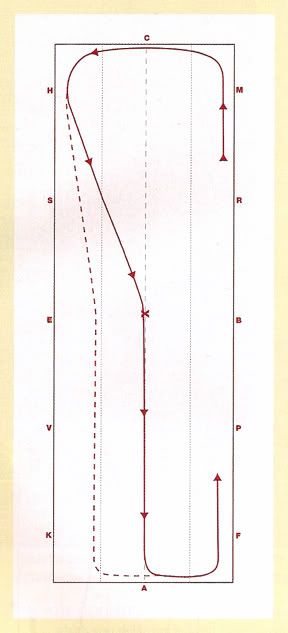Counterbend and Countercanter
Lately I've been inspired to go through all my old equestrian magazines. A found a bunch from 2005 onward. After finding at least one pertinent article per magazine, I decided it would be an even better idea for me to mark the pages and compile all the articles by scanning them and putting them into OneNote. Really, OneNote is probably the most awesome software in the world. I actually like it even more than I like photoshop or--GASP--Lightroom. (Blasphemy!) Seriously though, OneNote is the Kool-Aid to my water. The ice cream to my cake. All right, I'm going overboard now, but you get the picture.
I've taken it so far as to have a whole OneNote notebook devoted to equine articles. I have a section for health-related, science-related, dressage exercises, jumping exercises, management and finances, grooming and equipment, and even a section to serve as an index--organized by magazine and date, by subject, and even by author. (Plus hyperlinks to take me straight there.) Awesome.
The point of this ramble-tamble is to say that I've been finding a bunch of really good exercises to do with Toler. Strengthening stifles, as I discussed in my last post, was found in an old mag. I also rediscovered Leslie Webb's temporary gymnastic column featured by Practical Horseman. Every month between '05 and '06, she featured an exercise geared towards gymnastic dressage. Her columns were so popular, that Practical Horseman compiled and published them as a book.
I'd actually done this exercise before, with the second horse I leased (just before we bought Toler), a National Show Horse cross named Blue Kalu, but I don't think I'd ever done it with Toler.
Indeed, Toler puzzled over it the first day we tried it, though I had at least thought to warm him up to the idea with a large, slow trotting counter-bent circle. He was stiff at the shoulder and unwilling to trust the idea of my bend. The whole point, for us, of the counterbend serpentine was to work on his balance and maneuverability in a new way. Toler's stiffer side was worst of all. He'd waffle between wanting to rush at the rail in the middle (counterbent) loop or fall off his outside track and collapse into the loop. Some patient half-halts, regular bending circles to remind him of himself, and two attempts later, and he was starting to get the hang of it. I could feel him "open up" and trust my position to tell him where to go even if *his* positioning was in the wrong direction.
And that's the key: In keeping the unchanging bend, the rider must remain perpendicular to the loop through shoulders and hips.
Toler's second day of it (today) was infinitely better. We had one minor disagreement about falling off his outside on his stiffer direction, but it didn't even last the whole approach to the counterbent loop.
The other exercise of Webb's I started to work on was he initial step for developing a better countercanter. This step involves cantering (on the correct lead) on the rail, then following a diagonal to the centerline--the few strides of the diagonal becoming the centerline being the only section of countercanter.

The first day we tried the exercise was a bit of a disaster. Toler evidently thinks reverse psychology will work on me. He insisted that he change his lead at every possible opportunity. Ignoring the fact that I never even remotely asked for a change of lead. Ignoring the fact that in the past year we haven't even worked on flying lead changes. It almost makes me wonder if I shouldn't indulge him and have one day set aside for drilling his lead changes. I really don't think he's ready to work on his flying lead change, though, especially since he's only just starting to develop consistent straightness at the canter. Anyway. I managed to get him to hold the countercanter from H - S and stopped on the quarter line (the dashed, starter track in the diagram). We called that quits so I could get him to do a countercanter along the rail, which he has no problem with.
Today, he did both leads nearly perfectly. I started each side off with the quarter-line version, but he had lovely cadence and was willing to come back on his haunches to straighten out every time, so the adjustment to the centerline wasn't much of a challenge. We'll do one more day of it, where I'll ride both diagnoals to the centerline (H - X - A then from F - X - C), then we'll be on to the next step.
*Diagram from Practical Horseman, February 2006, p.60.


Post a Comment